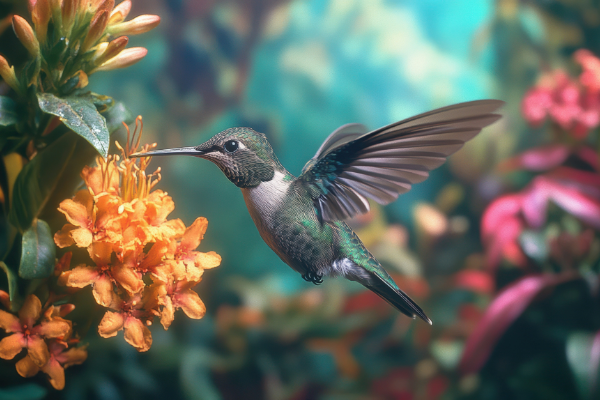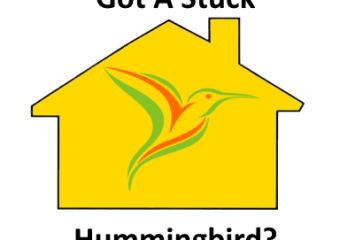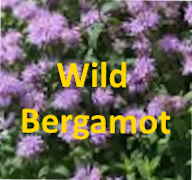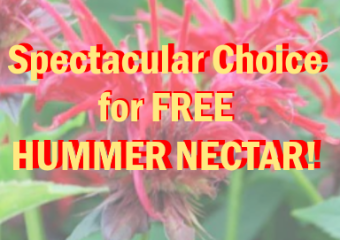DIY Hummingbird Nectar Recipes You Can Make at Home
DIY hummingbird nectar recipes are a wonderful way to attract these vibrant, fascinating birds to your backyard while ensuring they receive the best, healthiest food possible. Making your own nectar at home is simple, cost-effective, and allows you to avoid harmful additives found in many store-bought products. Plus, it’s a great way to deepen your connection with nature by providing a natural energy source for hummingbirds.
Why Make Your Own Hummingbird Nectar?
While commercial hummingbird nectar options exist, many contain artificial colors and preservatives that aren’t ideal for the birds’ health. Homemade nectar mimics the natural sugar water hummingbirds find in flowers, providing them with clean, safe energy essential for their high metabolism and constant activity. By making your own nectar, you can control the quality and ingredients, ensuring a pure and effective mixture.
Basic DIY Hummingbird Nectar Recipe
The simplest and most popular recipe for hummingbird nectar consists of just two ingredients: white granulated sugar and water. It’s quick to make, free of additives, and matches the natural sugar concentration found in flower nectar.
Ingredients:
- 1 part white granulated sugar
- 4 parts water
Instructions:
- Boil the water to eliminate impurities and help dissolve the sugar more easily.
- Stir in the sugar until completely dissolved.
- Allow the mixture to cool completely before filling your hummingbird feeder.
- Store any extra nectar in the refrigerator for up to one week.
This 1:4 sugar-to-water ratio is ideal for hummingbirds, providing the right amount of energy without overwhelming them with excess sugar.
Variations of the Basic Nectar Recipe
Though the classic recipe is highly effective, you can tweak it to suit your needs or environment:
- Raw Sugar or Organic Cane Sugar: Some people prefer using raw or organic sugars, but be careful as unrefined sugars may contain minerals harmful to hummingbirds in large amounts. It’s safest to stick to plain white granulated sugar.
- Fruit Infused Nectar: Adding small pieces of fresh fruit like oranges or berries can give the nectar a subtle aroma, potentially attracting more birds. Be sure to remove fruit pieces regularly to avoid fermentation.
- Herbal Infused Nectar: A few drops of fresh mint or basil can add an interesting infusion, though this is more for your enjoyment during feeding sessions rather than a necessity.
What Not to Use in Your DIY Hummingbird Nectar
Avoid honey, artificial sweeteners, or red dye in your recipes. Honey can promote the growth of harmful bacteria and fungi, which can cause disease in hummingbirds. Artificial sweeteners do not provide energy and may be toxic to birds. Similarly, red dye is unnecessary since feeders with red parts alone are sufficient to attract hummingbirds.
Tips for Offering Homemade Nectar Safely
- Clean Feeders Regularly: To prevent mold and harmful bacteria, clean your feeders thoroughly with hot water at least once a week, and more often during hot weather.
- Replace Nectar Frequently: Change the nectar every 3-5 days in warm climates and weekly in cooler areas to keep it fresh.
- Keep Feeders in Shaded Areas: This helps slow fermentation and preserves freshness.
- Watch for Mold or Cloudiness: If you notice cloudiness or mold, immediately discard the nectar, clean the feeder, and refill it with fresh nectar.
Enhancing Your Backyard to Attract Hummingbirds
In addition to placing feeders with your DIY hummingbird nectar recipes around your yard, consider planting nectar-rich flowers such as bee balm, trumpet vine, salvia, and columbine. These native plants not only attract hummingbirds but also other beneficial pollinators, supporting biodiversity.
Providing fresh nectar in feeders along with natural flowers creates a welcoming habitat that keeps hummingbirds returning and thriving in your garden.
Conclusion
Making DIY hummingbird nectar recipes at home is a rewarding and easy project that benefits both you and the hummingbirds. By preparing fresh, natural nectar, avoiding harmful ingredients, and maintaining clean feeders, you provide a safe and energizing food source for these delightful birds. Whether you’re a seasoned bird enthusiast or just starting to explore backyard birdwatching, these homemade nectar recipes are a simple way to connect with nature and enjoy the beauty of hummingbirds in your own backyard.






